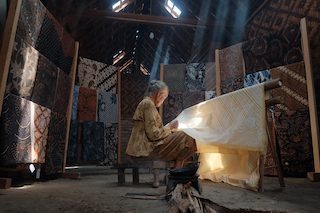Batik has been part of Indonesian pride and identity for a long time. Indonesian people place a lot of importance on batik, and many of them dress in it for formal and informal occasions. Indonesians frequently employ batik in a variety of rituals, ceremonies, traditions, festivities, and even day-to-day activities.
Initially, batik making techniques only used written batik or batik tulis techniques, the original batik technique that passed down generation to generation. Then the technique developed with the discovery of the stamped batik or batik cap technique which made batik work faster. There are also the case where written batik and stamped batik are mixed into one piece of cloth, which then called batik combination or batik kombinasi.
Batik Process
The process of creating batik is both time-consuming and labor-intensive, but it results in beautiful and unique textiles. Here’s a step-by-step explanation of the batik-making process:
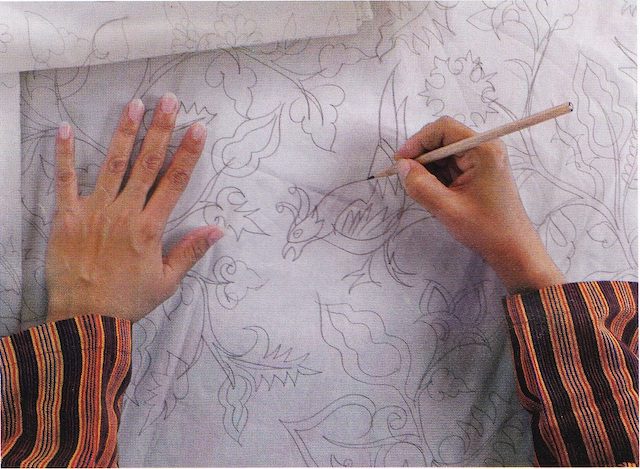
Designing
Before applying anything to the fabric, the artist or craftsman plans the design. This can be done freehand or by using a stencil, in a piece of paper or directly on the cloth.
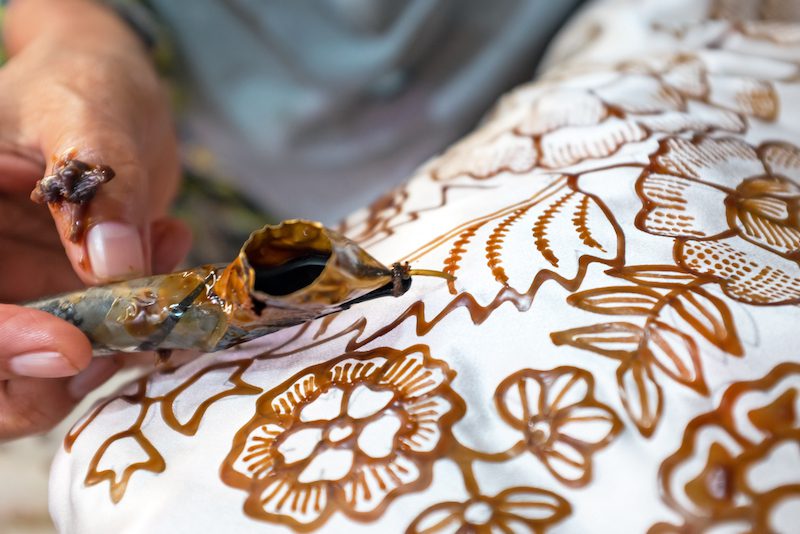
Mencanting and Stamping
The key element in batik is the wax-resist method. Hot melted wax is applied to the fabric using a tool called a “canting” (a small copper, traditional pen-like tool) or a stamp. The wax covers the areas that are intended to remain the original color of the fabric.
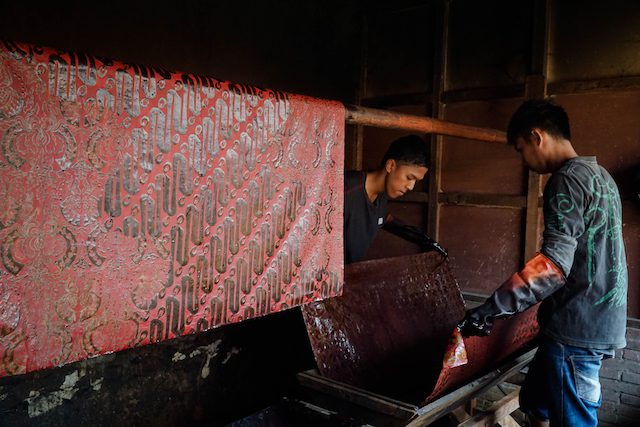
Coloring
After the wax has dried and set, the fabric is immersed in the dye bath. The cloth should be dipped several times in the coloring container depending on the desired color; the stronger the color, the more times it has to be dipped. The waxed areas will resist the dye and remain the original color.
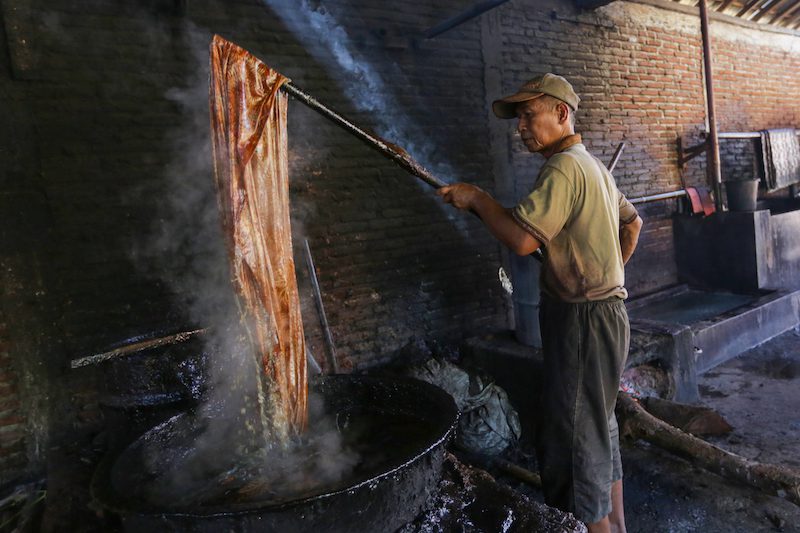
Melorot
To remove the wax, the fabric is boiled or immersed in hot water, which melts and removes the wax. The cloths will be dipped several times into two containers of boiling water, then washed in two containers of running clean-cold water to ensure the cloth is clean.
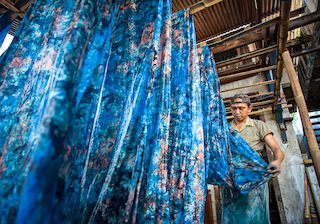
Drying
After the cloth is clean, the fabric is then removed from the water container and allowed to dry naturally. Depending on how they are made and the colour-binding ingredients used, certain cloths cannot be exposed to direct sunlight as it will affect the batik colour.
Depending on the batik design, the artist then applies more wax to cover the areas that should retain the first color. This process can be repeated multiple times, with waxing and dyeing alternately to build up intricate and layered patterns.
Batik is a highly skilled and artistic process that requires patience and precision. The combination of wax resist and multiple dyeing stages allows for a wide range of intricate and colorful designs, making each piece of batik a unique work of art. Indonesian batik, in particular, has a rich cultural heritage and is recognized as a UNESCO Intangible Cultural Heritage of Humanity.

